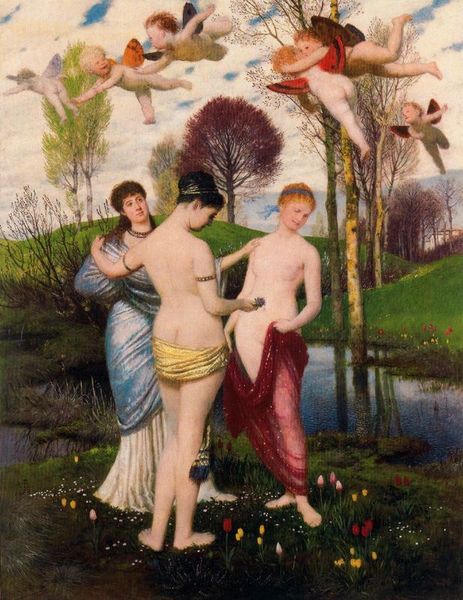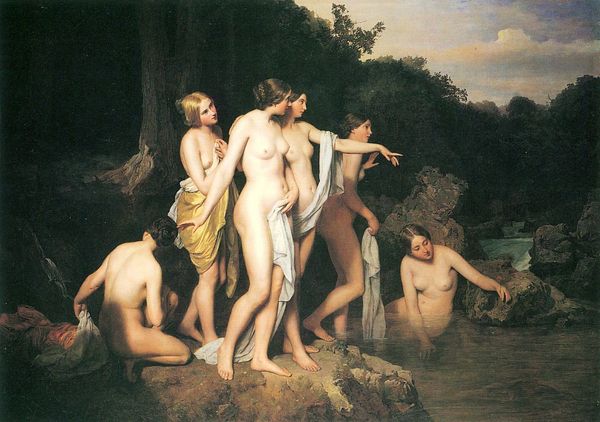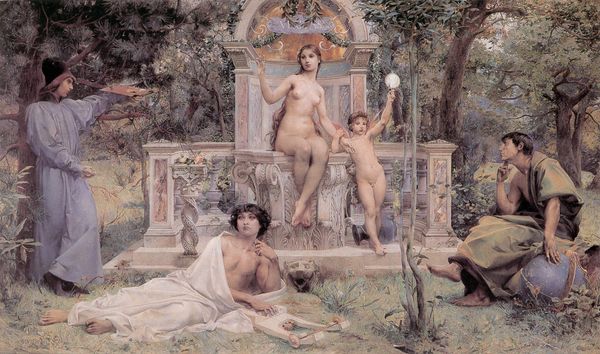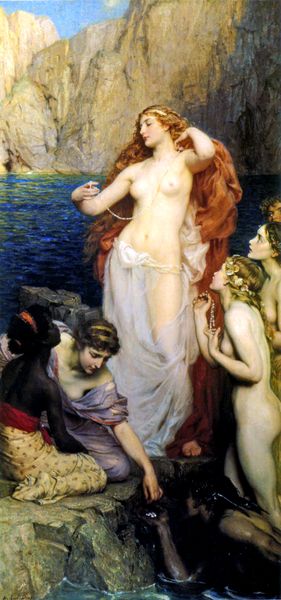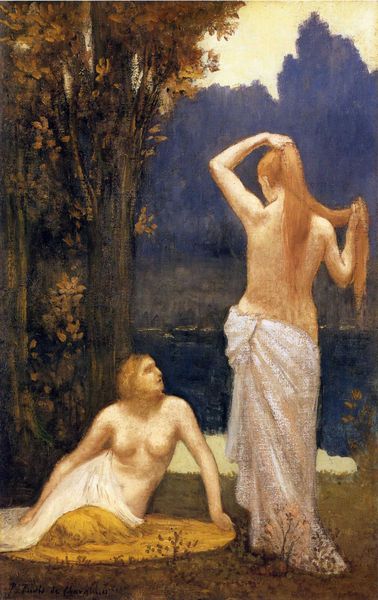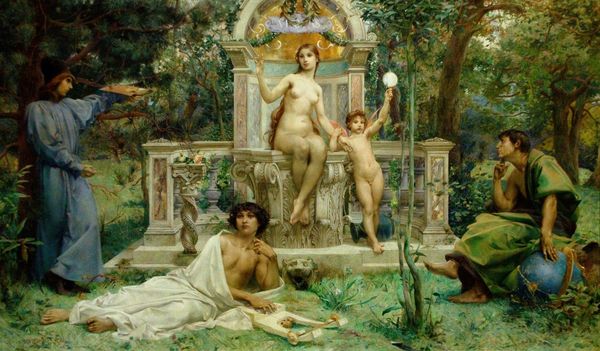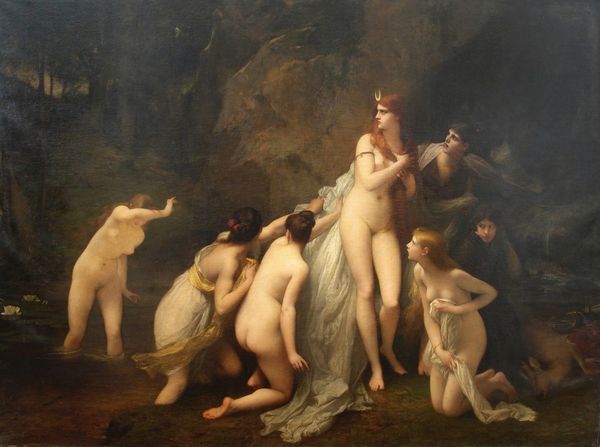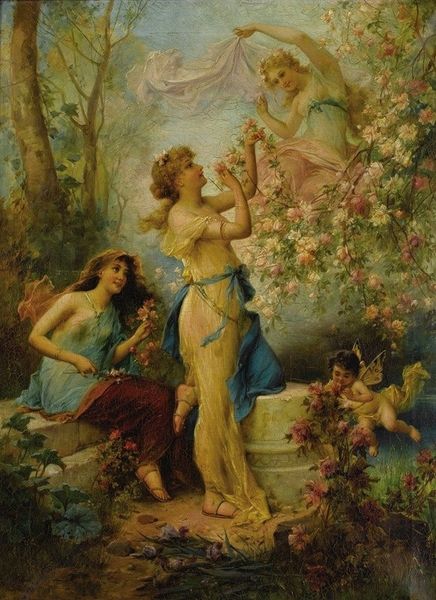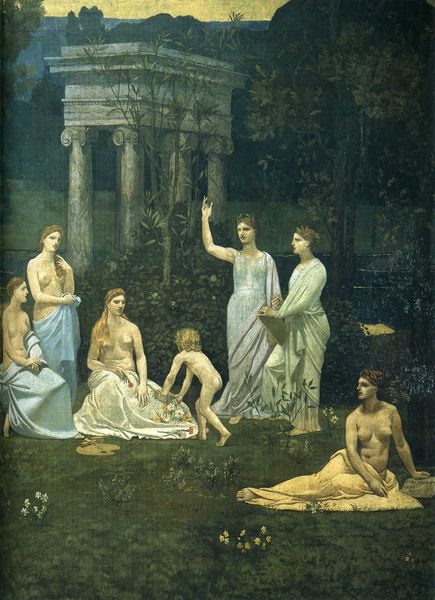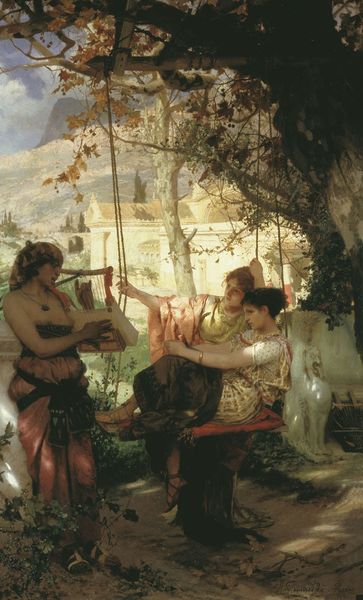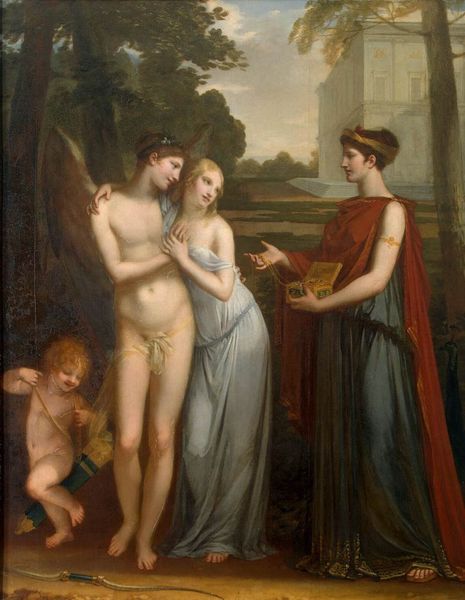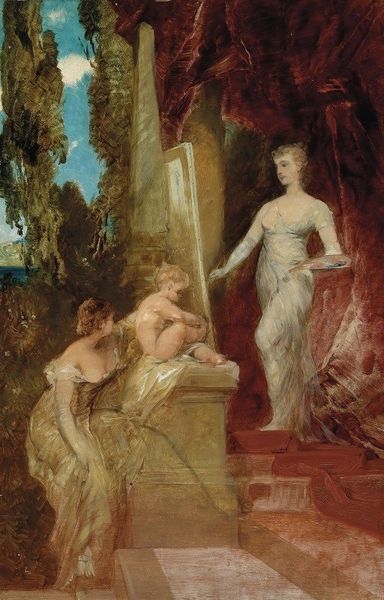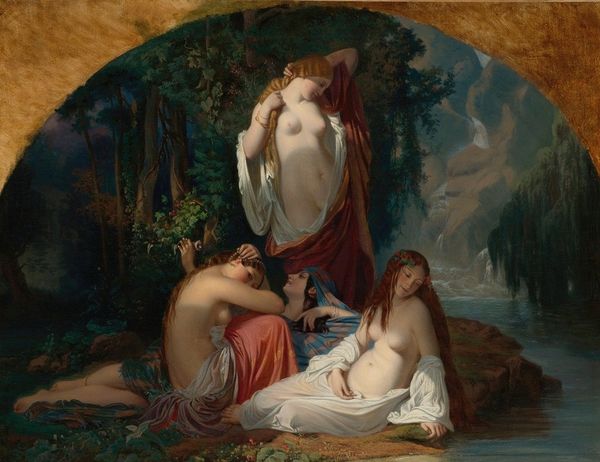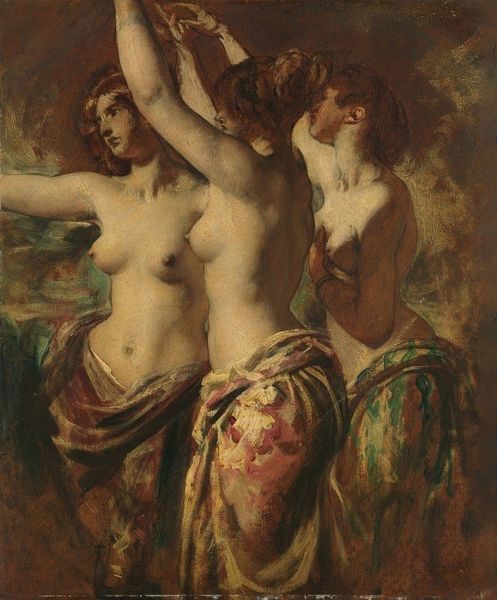
painting, watercolor
#
gouache
#
allegory
#
painting
#
greek-and-roman-art
#
landscape
#
figuration
#
oil painting
#
watercolor
#
romanticism
#
history-painting
#
nude
#
watercolor
Copyright: Public domain
Curator: This delicate piece is titled "Minerva and the Three Graces," attributed to Charles Gleyre. It seems to be rendered in watercolor and gouache. Editor: The figures are lovely; it almost feels like stepping into a dream, doesn’t it? I'm struck by the composition. It has a distinct ethereal quality, like a watercolor come to life. Curator: Well, it’s fascinating how Gleyre intertwines classical mythology with Romantic sensibilities. Here, we see Minerva, the Roman goddess of wisdom, surrounded by the Three Graces, deities embodying charm, beauty, and creativity. The juxtaposition presents a kind of idealized, harmonious existence. The very nature of creating these allegorical figures is tied up with a socio-political mission, reinforcing particular ideologies about virtue, taste and value. Editor: I agree. What intrigues me most are the material choices. Watercolour and gouache often demand a certain level of planning. They are not as forgiving as oils. One wonders what the artist wanted to convey by the deliberate use of this medium and the impact that has in relation to its production. The softness contrasts beautifully with the rigid historical references. I am also interested in that labor element - How the making and reception changed according to artist’s choices and public demand. Curator: And if you consider how Gleyre exhibited extensively at the Paris Salon, "Minerva and the Three Graces" perhaps acted as a kind of sophisticated engagement with, or even a commentary on, the classical tradition, intended for the eyes of the bourgeois elite who frequented such exhibitions. Editor: Looking closer at those production choices, do you think it's an engagement or a subversion? There’s something about those almost translucent figures and that light background—it creates a tension, a delicate tension within a set of art making requirements dictated by public venues of the day, if it even had one. That's some skill to subvert something by simply re-considering materials, process and what the consumption habits of your intended audience might be. Curator: I appreciate your perspective, thinking about that creative act. "Minerva and the Three Graces" invites a wider examination of beauty, knowledge, and their portrayal through an intricate nexus of culture, materials, and societal values. Editor: I think so too. Seeing the image, it invites a quiet appreciation of how the seemingly straightforward act of crafting impacts both art history and materials used.
Comments
No comments
Be the first to comment and join the conversation on the ultimate creative platform.
